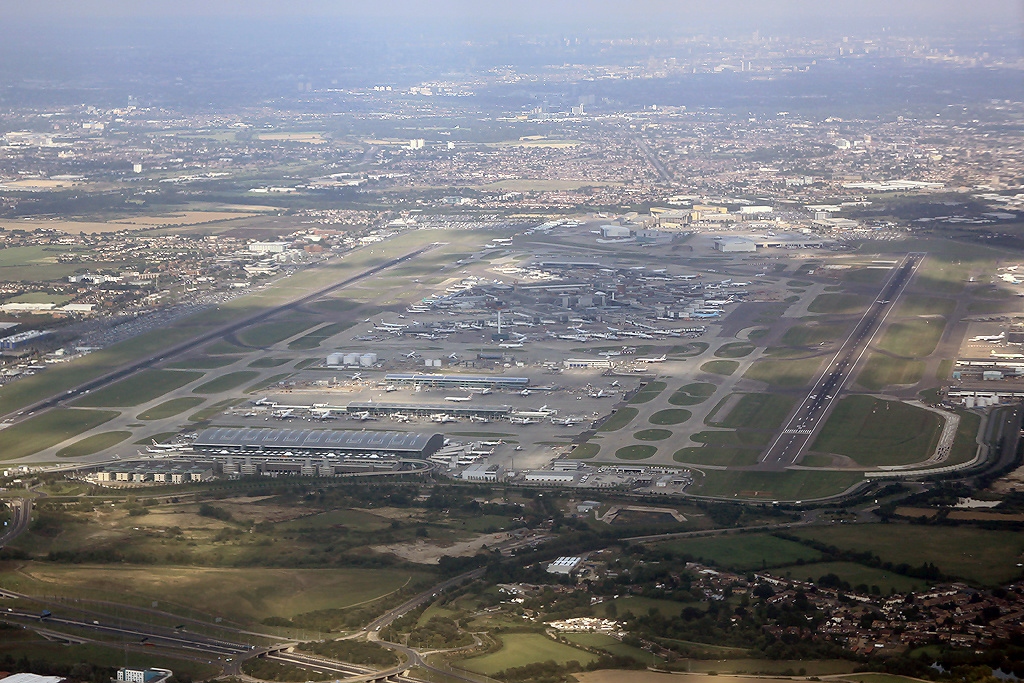All departures from Heathrow airport were suspended for over an hour due to a drone sighting.
The shut down comes just three weeks after Gatwick, Britain’s second-busiest airport, was closed down for parts of three days because of drone sightings.
The airport tweeted: “We are responding to a drone sighting at Heathrow and are working closely with the Met Police to prevent any threat to operational safety. As a precautionary measure, we have stopped departures while we investigate. We apologise to passengers for any inconvenience this may cause.”
World’s safest airlines for 2019
One hour later it tweeted:
“We continue to work with the Met Police on reports of drones at Heathrow. We are working with Air Traffic Control and the Met Police, and have resumed departures out of Heathrow after a short suspension. We will continue to monitor this and apologise to anyone that were affected.”
Police were among those who saw the drone and the British military provided assistance although didn’t detail what that assistance was.

Over 1000 flights and 140,000 passengers were impacted when Gatwick was shut down before Christmas.
Last month Gatwick announced that it had spent US$8 million buying a system to prevent future attacks.
Heathrow Airport also said it was buying systems to guard against drones.
The airport handles 1,300 flights a day.
Flightradar is showing some flights are arriving but many aircraft waiting to take-off.

Heathrow is the second busiest airport in the world measured by international passenger traffic, the seventh busiest in the world by total traffic.
In 2017 it handled 78.0 million passengers.
An Australian company which as the technology it says could have prevented the London Gatwick travel chaos has warned airports will increasingly need anti-drone defenses as remotely piloted aircraft become more sophisticated.
Sydney-based Droneshield has been working on technology for the last five years to detect unwelcome drones and bring them down when it does.
It has attracted the attention of police and military forces and Droneshield chief executive Oleg Vornik says it is “highly applicable” to airports such as Gatwick.
He believes the company’s technology would have detected the drone, brought it down and helped authorities track down the operator.
“We have passive detection sensors which are effective up to five kilometres away, ‘’ he told AirlineRatings last month.
“The sensors are completely passive and they listen for the handshake connection between the drone and the controller.
“They don’t interfere with any other equipment at the airport like the radar or equipment at the ground control station or in the aircraft.
“They are able to accurately position the drone and send alerts. They send alerts in real time and they easily integrate into existing airport security equipment.”
Vornik said detecting a drone was part of a two-step process that included countermeasures to bring down a drone.
Droneshield produces a sci-fi rifle-like device it calls a Dronegun Tactical that has a range of up to 1km.

“We use particular kinds of jammers which are very surgical, meaning they jam the signal frequencies the drones use but not anything else,’’ Vornik said
“So, for example, they will not interfere with radar at the airport or cellular phone communications or emergency broadcast or control communications.
“So you will disable the drone but you’re not going to interfere with any other equipment.”
Vornik said the technology had undergone independent testing and certification by a laboratory in the US that showed it was safe for use at airports.
He said the US Federal Aviation Administration viewed counter-drone technology as critical but he expected to it take some time before it was approved for use in the US.
What was more likely was that a smaller environment such as Australia or the UK would see its deployment first.
And while he was not aware of any airports globally that had full deployment of counter-drone technology, he expected there would be a domino effect once it was.
“I think the moment we see the first of the airports deploy counter-drone technology, we expect it to spread really quickly,’’ he said.
























